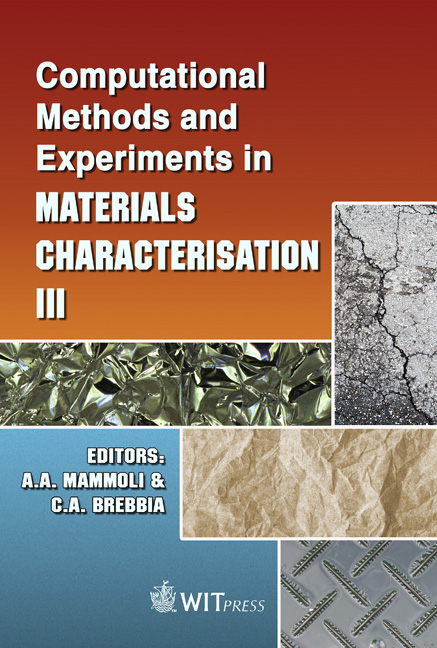Thermo-analytical Evaluation Of Wear Debris For Thermoplastic And Sintered Polyimide
Price
Free (open access)
Transaction
Volume
57
Pages
10
Published
2007
Size
1,282 kb
Paper DOI
10.2495/MC070211
Copyright
WIT Press
Author(s)
P. Samyn, I. Van Driessche, G. Schoukens & P. De Baets
Abstract
Transitions in friction and wear properties for polyimides are related to thermogravimetric analysis (TGA), differential thermal analysis (DTA) and mass spectroscopy (MS) of wear debris particles. Debris interactions in the sliding interface are important for the formation of a transfer film on the counterface. For sintered polyimide, fine wear debris particles are observed after sliding at 100 to 180°C, corresponding to high friction and lack of transfer. Conglomerated particles at 180 to 260°C coincide with a drop in friction and stabilisation in wear rates. Chemical reactions in the sliding interface such as hydrolysis and imidisation are illustrated. For thermoplastic polyimide, dark-coloured particles after 100 to 120°C sliding indicate hydrolysis, flake-like particles after 120 to 180°C sliding indicate imidisation and roll-like debris at 220 to 260°C show melting. It is confirmed by DTA that the glass transition and recrystallisation temperatures shift or disappear depending on the sliding temperature, representing the formation of cross-links and better ordered crystalline phase under sliding. Debris becomes brittle and consequently acts more abrasive during sliding. Keywords: polyimide, tribology, wear debris, differential thermal analysis, thermogravimetric analysis, mass spectroscopy, hydrolysis, imidisation. 1 Introduction Polyimides are used in sliding contacts with steel counterfaces because of their self-lubricating effect. This means that no external lubricants such as oil or
Keywords
polyimide, tribology, wear debris, differential thermal analysis, thermogravimetric analysis, mass spectroscopy, hydrolysis, imidisation.





